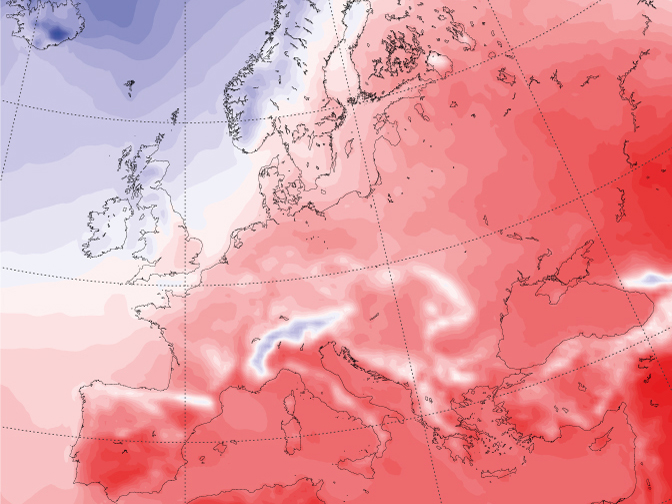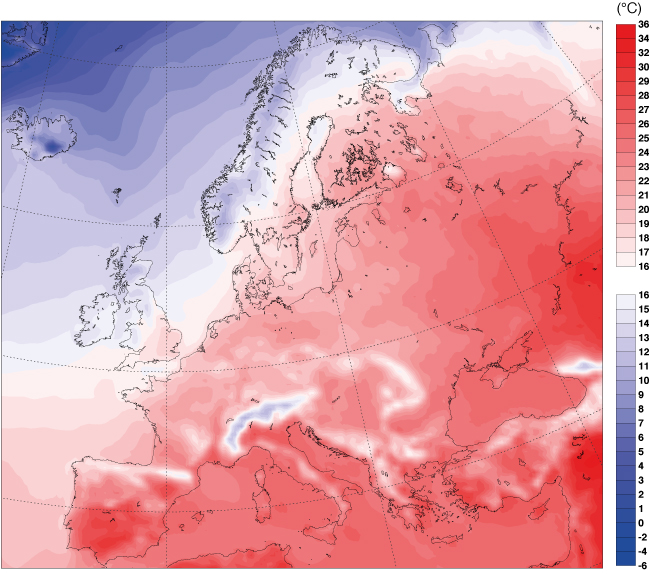

The ECMWF-run Copernicus Climate Change Service (C3S) has released its most powerful global climate monitoring dataset to date, known as the ERA5 climate reanalysis.
This encyclopaedic dataset provides a new and comprehensive numerical description of the recent climate on a global scale.
It contains estimates of atmospheric parameters such as air temperature, pressure and wind at different altitudes, and surface parameters such as rainfall, sea ice, soil moisture, sea-surface temperature and wave height. Climate reanalysis data is used by public services, companies and organisations. It provides the means to assess climate trends and the changing climate. It features in numerous scientific studies and commercial applications. During the two-year period ending in 2016 alone, C3S had 20,000 users of reanalysis data.
In November 2016, two months’ worth of test data from ERA5 was released so that users could begin to adapt their products and services. Now a much larger quantity of data going back to 2010 has been released.
“This initial release of ERA5 makes a vast amount of climate data freely and openly available – around 900 terabytes,” says Jean-Noël Thépaut, Head of C3S at ECMWF. To put that in perspective, a stack of CDs more than two kilometres high would be needed to store this amount of data.
“Look at it as an encyclopaedia”
In early 2018, after more than two years of production on ECMWF’s supercomputers, the service will release ERA5’s hourly snapshots of all climate variables since 1979. This is equivalent to a stack of CDs around 12 kilometres high – higher than the summit of Mount Everest.
Beyond 2018, ECMWF will continue to add newly collected data to the ERA5 dataset to ensure that C3S users always have timely access to a consistent and up-to-date record of the global climate.

Daily mean surface air temperature in Europe in July 2010 from ERA5.
Climate reanalysis combines observations from across the world into a globally complete and consistent dataset using the laws of physics. Releasing this new dataset is essential to make the very best climate science data available to the service’s users.
By the end of next year, the service will have reanalysed the global climate back to 1950, altogether generating roughly 10 petabytes of data.
“You have to look at it as an encyclopaedia or a dictionary,” says Hans Hersbach, C3S Reanalysis Team Leader. “You are not going to need the whole thing. You only use the information that you need, but what is important is that it is there when you need it. We will also provide tools for analysing the information online, without the need to download large amounts of data.”
All ERA5 data products are open access and free to use. They are hosted in ECMWF’s main repository for meteorological data, MARS (Meteorological Archival and Retrieval System), and will be available in 2018 from the Climate Data Store, a facility which will provide access to a wide range of climate information and products as part of the Copernicus Climate Change Service.
Copernicus is the European Commission’s flagship Earth observation programme. It delivers freely accessible operational data and information services which provide users with reliable and up-to-date information related to environmental and security issues.
The Copernicus Climate Change Service is run by ECMWF on behalf of the European Commission. ECMWF also operates the Copernicus Atmosphere Monitoring Service (CAMS).
Top image: Daily mean surface air temperature in July 2010 from ERA5.
